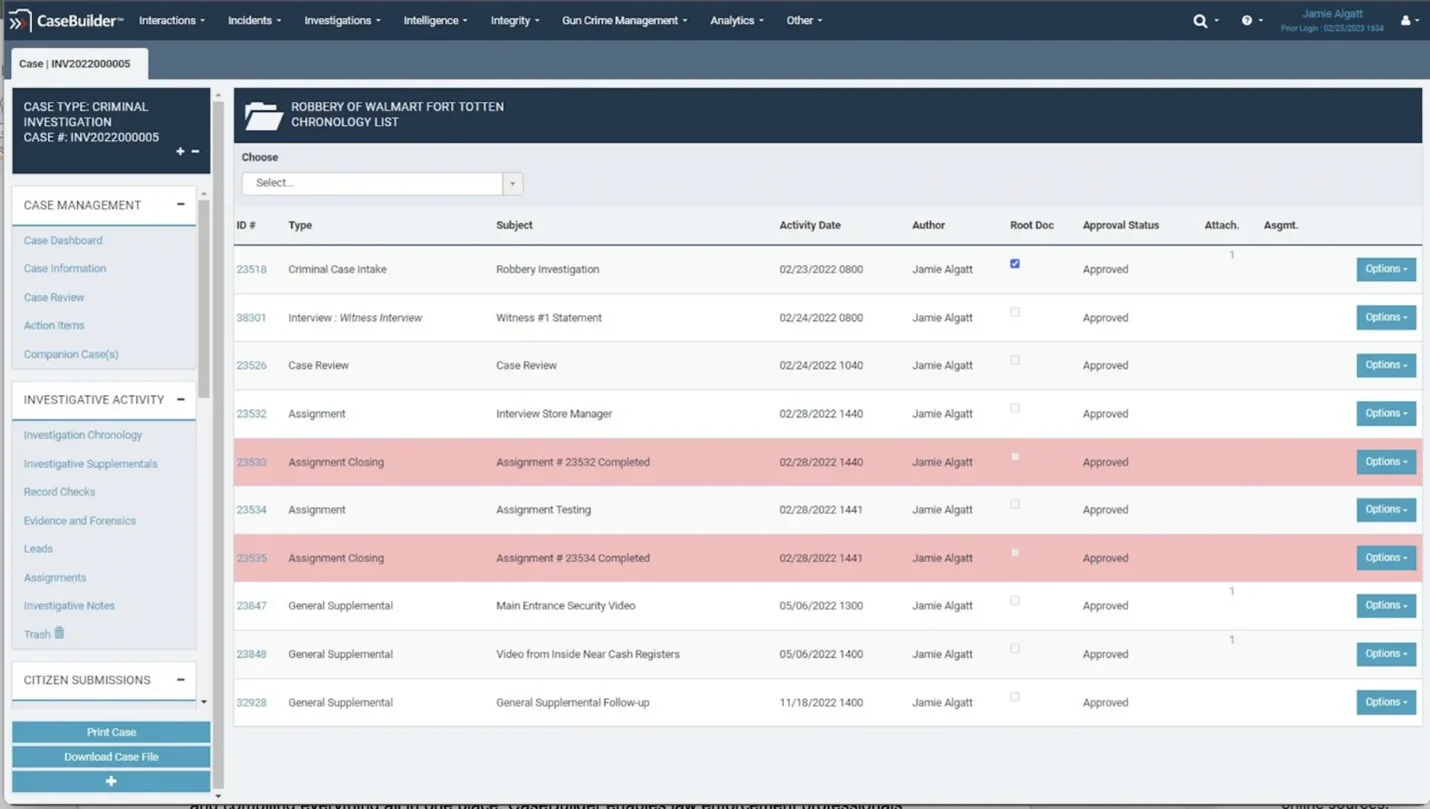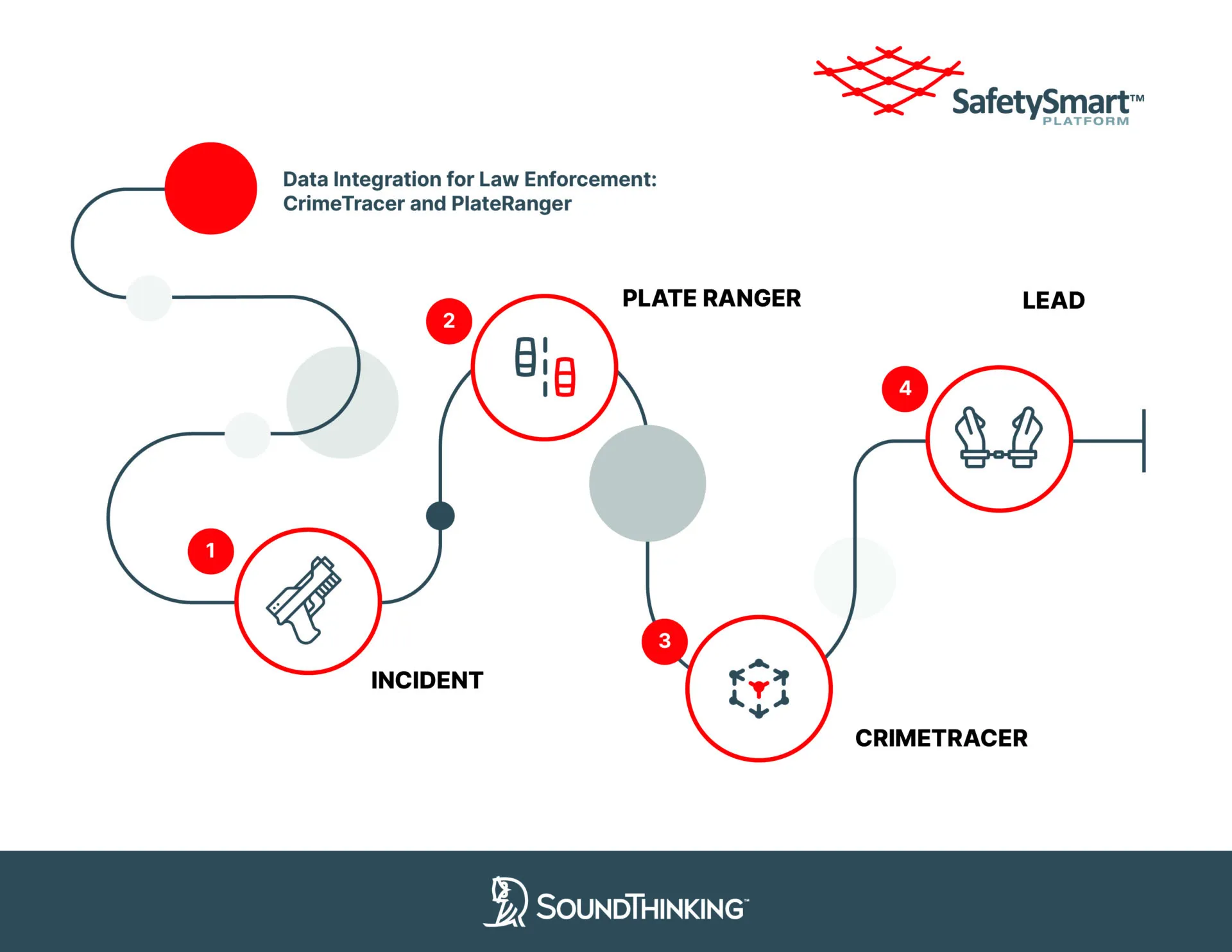In law enforcement, quickly connecting different data sources can determine whether a crime is stopped or a lead is lost. Investigators are often buried under mountains of reports, case files, public records, sensor data, and surveillance feeds spread across siloed systems. Traditional search methods—manual keyword queries, rigid filters, and hours of cross-referencing—are inefficient and often miss subtle connections.
Today’s investigative technology is addressing these challenges with new capabilities that make search more accurate, intuitive, and efficient. At SoundThinking, many of these advances are powered by artificial intelligence (AI)—applied responsibly, with explainability and compliance built in from the start. The result is not hype, but practical outcomes: investigators can find matches in moments, connect leads across jurisdictions, and surface links that would otherwise remain hidden.
The Challenge of Disparate Investigative Data
Investigative agencies face three core challenges that make connecting cases difficult. First, data fragmentation means records are stored in different systems such as CAD (Computer-Aided Dispatch), RMS (Records Management Systems), license plate readers, video management platforms, federal watchlists, and even social media feeds. Second, traditional database searches are rigid, requiring exact spelling, strict filters, or SQL-like expertise to pull the right records. Finally, the sheer volume and velocity of incoming information is overwhelming. Thousands of new reports, 911 calls, and sensor inputs arrive daily, making it impossible for human analysts to keep pace without technical assistance.
The result is missed opportunities. A suspect’s alias in one system, a similar vehicle description in another, and a loosely related incident report may never be tied together in time. These gaps highlight the urgent need for advanced search capabilities that can bridge silos and scale with the growing demands on law enforcement.
How Advanced Technology Improves Investigative Practice
Modern investigative systems are turning both unstructured and structured data into searchable intelligence, and the effects are visible in everyday investigative work. The process begins with data ingestion and normalization, where information from RMS, CAD, ALPR, body-worn cameras, and external databases is collected and aligned. Entity resolution ensures that variations of a name or vehicle plate resolve to the same record. Natural language processing parses narrative reports to extract people, locations, times, and vehicles, while relationship extraction links them into context. Semantic search allows investigators to type queries in plain language—“black sedan near school burglary,” for example—and receive meaningful results. Graph databases then map entities into networks, revealing connections across cases.
AI plays a central role in enabling these capabilities. Generative models simplify the querying process even further. Instead of crafting complex filters, investigators can pose natural questions. With CrimeTracer’s™ chat-based interface, a detective might type, “Show me all burglary reports in the last 30 days with suspects driving a dark-colored sedan within 2 miles of Main Street.” The system translates this request across multiple databases and returns consolidated results.
These advances are reshaping investigative workflows. Units can move quickly through mountains of data, surfacing the most relevant reports without needing specialized technical expertise. Analysts can identify cross-jurisdictional patterns that once required weeks of manual review. Supervisors can allocate resources based on evidence trends rather than intuition. Prosecutors can generate timelines and connect evidence more efficiently, strengthening their cases. Consider major incident responses: when multiple 911 calls, surveillance camera feeds, and automatic license plate reader hits converge during a critical event, integrated platforms help investigators filter noise from signal. Instead of manually correlating data streams, the system highlights overlapping entities and potential leads in real time, giving law enforcement a vital head start.
Example Use Cases
A robbery in County A might mention a blue Toyota Corolla. A burglary in County B could describe a light-blue sedan with a partial plate “7KX.” The entity resolution engine normalizes both descriptions, while the graph database links them to a vehicle with prior citations. Investigators receive an alert suggesting the cases may be connected—an insight that rarely surfaces through traditional methods.
In another scenario, investigators might ask: “List firearm-related incidents in the last 90 days involving suspects under 21.” The semantic search module interprets the query across RMS and CAD systems. The vector index retrieves the relevant incidents, while the knowledge graph highlights common suspects or organizations. The system then generates a concise summary for review, significantly reducing investigative time.
These platforms have also proven effective in narcotics and gang investigations. By linking field reports with social media monitoring, case notes, and prior arrests, AI-enabled tools can surface recurring names, vehicles, and locations. This allows task forces to identify organized networks faster and disrupt their activity with targeted enforcement.
Challenges and Ethical Considerations
Bias in AI models remains a risk when training data is incomplete or skewed. Techniques such as data augmentation and fairness-aware modeling help mitigate these risks, but governance is equally important. Privacy compliance is another major concern, especially with sensitive law enforcement data. Systems must align with CJIS requirements for access control, encryption, and auditing.
At SoundThinking, we have been clear that explainability and human oversight are non-negotiable. Investigators should understand how results are generated, and AI must always serve as an assistant—never a replacement for professional judgment. Integration with legacy systems is another challenge. Agencies often face difficulties with outdated RMS or CAD platforms that lack modern APIs, use inconsistent data schemas, or restrict bulk data export. Overcoming these issues typically requires custom connectors, middleware, or phased data migrations to ensure interoperability.
Impact and the Road Ahead
Investigative search is evolving rapidly. AI-powered features such as natural language queries and entity resolution are driving this shift—but what matters most is the outcome: investigators spending less time pulling records and more time solving cases.
Looking ahead, these systems will continue to advance through approaches like federated learning, which allow jurisdictions to keep data local while still sharing model insights securely. For agencies, the challenge is to balance adoption with accountability. Successful deployments will depend on governance structures, continuous auditing, and clear usage policies that ensure technology augments decision-making rather than replacing it.
Done right, this approach helps investigators solve cases more efficiently, supports safer communities, and reinforces public trust. That is the future we are building toward: technology that not only connects the dots, but does so responsibly and transparently, in service of the people law enforcement protects.
Contact us to learn more about how advanced investigative search capabilities can help your agency.





